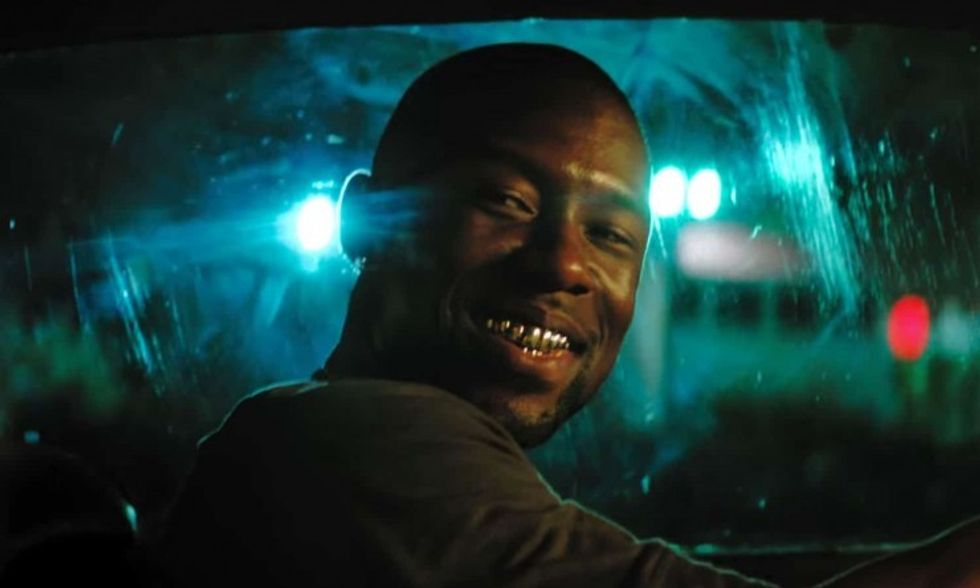5 Cinematography Lessons From Academy Award-Winning Movies
It's time to enhance your creative eye.

Cinematography is a crucial component of filmmaking, and it can make or break a movie. It encompasses all the technical aspects of camera work, lighting, color, framing, and movement that create the visual language of a film.
When done right, it can enhance the narrative, evoke emotions, and transport the audience to different worlds. That's why, in this article, we'll explore five cinematography lessons we can learn from Academy Award-winning movies.
These films showcase the best of what the art of cinematography can achieve, from the use of color to the camera movement to lighting and composition.
Whether you're a filmmaker, student, or simply a cinephile, these lessons will inspire you to look at films with a more discerning eye and appreciate the magic of cinema.
Let's dive into the visual storytelling of these masterpieces and learn how to create cinematic wonders.

5 Cinematography Lessons From Academy Award-Winning Movie
Many important aspects of cinematography cancan make a film stand out, and Academy Award-winning movies often provide excellent examples of how to use these techniques effectively. Here are five cinematography lessons that can be learned from some of the most acclaimed films in recent years:
1. Use of color
The Grand Budapest Hotel (2014), directed by Wes Anderson, won the Academy Award for Best Production Design, and its use of vibrant colors is one of the reasons it stands out. The movie's color palette creates a whimsical and otherworldly atmosphere, contributing to the film's unique tone.
Color can skew the audience's mood and understanding. The more you deliberately use color, the more you understand how to get the audience where you need them to be with subtle cues.

2. Lighting
Moonlight (2016) directed by Barry Jenkins, won the Academy Award for Best Picture, and its lighting plays a key role in creating mood and emotion. The movie often uses low-key lighting to create shadows and highlights, which gives the film a sense of intimacy and intensity.
Lighting is so very important in this visual medium. It can change the tone, the intentions, and it can affect performances. Light your scenes with consistency and vigor.

3. Camera movement
Birdman (2014) directed by Alejandro G. Iñárritu, won the Academy Award for Best Picture, and its use of long takes and continuous camera movement creates a sense of urgency and immediacy. The film's camera moves fluidly through the story, blurring the line between fantasy and reality.
You're working in a visual medium. Move the camera. A play is static. Film and TV have to have dynamism. If the camera moves, put intention behind it. Follow a character, take us into the underworld, and just surprise us at every turn.

4. Composition
Roma (2018) directed by Alfonso Cuarón, won the Academy Award for Best Cinematography, and its use of wide shots and careful framing creates a sense of space and depth. The film's composition draws the viewer into the world of its characters and emphasizes their smallness in the face of the larger forces at work in their lives.
We sort of take for granted that every frame can be a painting (shout of Tony Zhou). Each image on the screen can move an audience. So make sure your compositions have meaning and purpose behind them.

5. Genre-specific techniques
Mad Max: Fury Road (2015) directed by George Miller, won the Academy Award for Best Film Editing, and its use of fast cuts and extreme angles is a key part of the film's visceral action sequences. The movie's unique visual style is a result of its genre-specific techniques, which contribute to its intense and thrilling energy.
Genre should be your guiding light. What is expected from this genre, and what can come in and be unexpected? How can you mash things up to talk about something deeper and more relevant to society?

Summing Up 5 Cinematography Lessons From Academy Award-Winning Movies
In conclusion, the art of cinematography is essential to any film, and these Academy Award-winning movies demonstrate the power of visual storytelling.
From the use of color in The Grand Budapest Hotel to the camera movement in Birdman, each film offers unique insights into how to use cinematography to enhance the story and the audience's experience.
By learning these five cinematography lessons, filmmakers and cinephiles alike can elevate their understanding of the art of cinema and appreciate the magic of visual storytelling. The lessons from these films prove that cinematography can create an immersive and captivating experience that transports the audience to another world.
So, let's continue to celebrate the magic of cinematography and inspire future filmmakers to create unforgettable visual stories.

 "'Back Home"via Mercedes Arutro
"'Back Home"via Mercedes Arutro 'Back Home'via Mercedes Arutro
'Back Home'via Mercedes Arutro 









